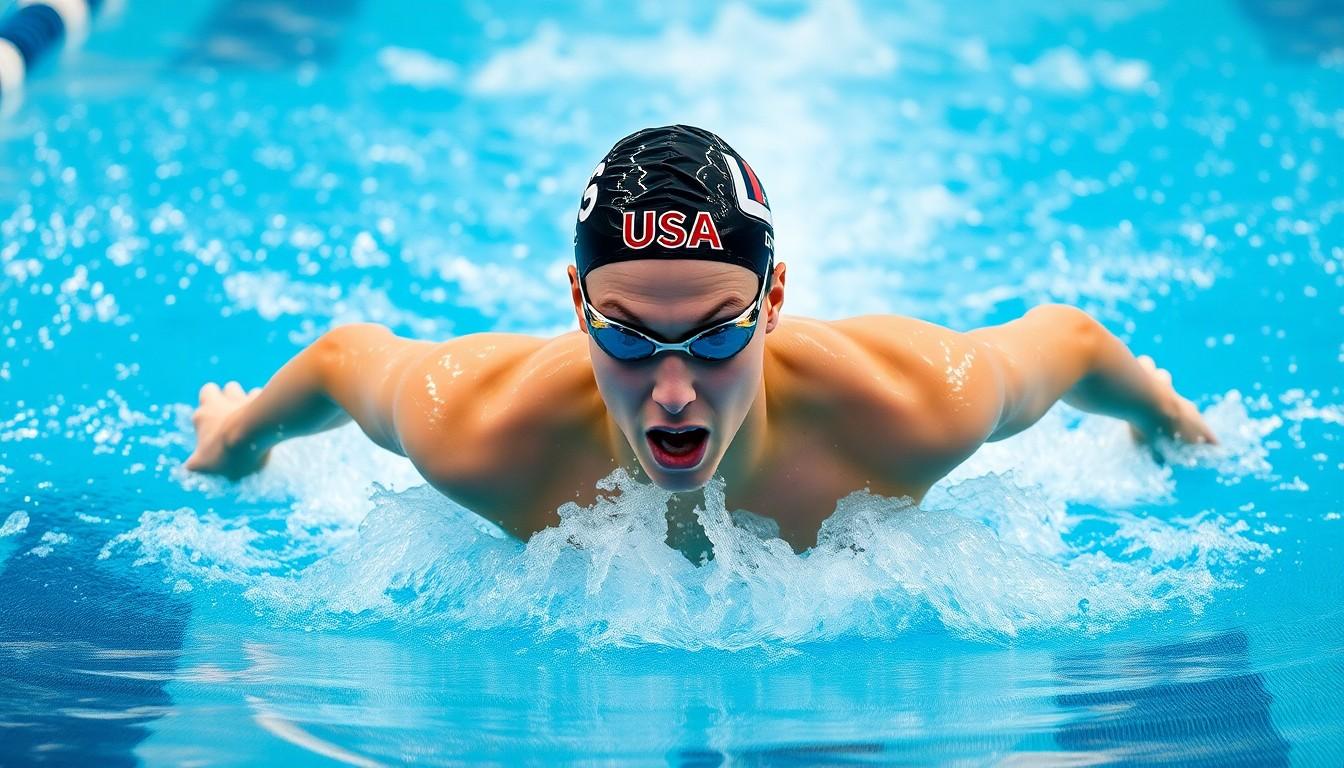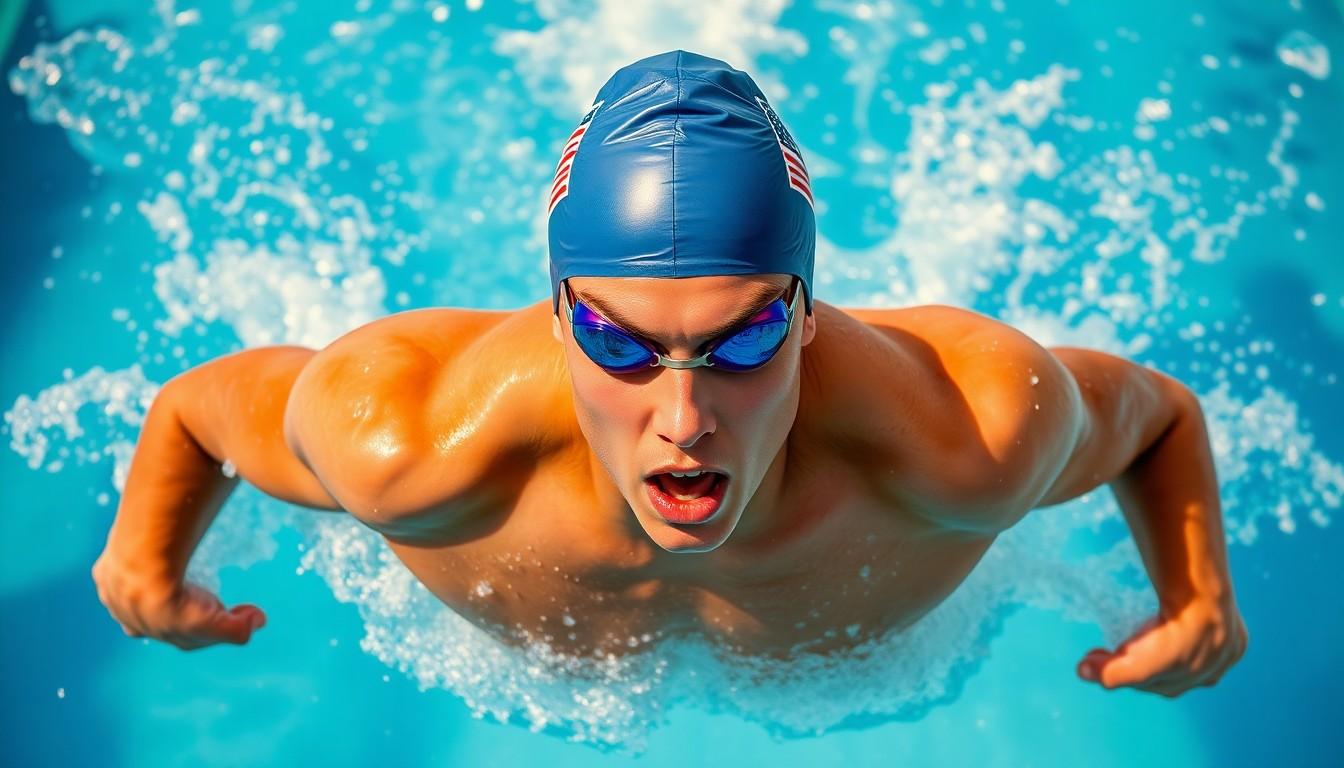Diving into the world of swimming types can feel like jumping into a pool full of possibilities. From the graceful strokes of competitive swimmers to the leisurely splashes of weekend warriors, each style has its own flair and finesse. Whether you’re channeling your inner dolphin or just trying to keep the dog paddle from becoming your signature move, there’s a swimming style for everyone.
Table of Contents
ToggleOverview of Swimming Types
Swimming styles vary significantly, catering to different skills, preferences, and goals. Competitive swimming showcases distinct techniques, including freestyle and butterfly. Freestyle, also known as front crawl, emphasizes speed and efficiency through a streamlined position and flutter kick.
Butterfly, on the other hand, features a unique synchronized movement of the arms and a distinctive dolphin kick. This technique demands strength and rhythm, making it one of the most challenging strokes.
Backstroke allows swimmers to float on their backs while using alternating arm movements and a flutter kick. This position focuses on relaxation and balance, appealing to various skill levels. Breaststroke stands out with its slower pace and simultaneous arm and leg movements. Swimmers appreciate this stroke for its appeal to beginners and its emphasis on proper technique.
Open water swimming brings a different dynamic, often involving outdoor venues like lakes and oceans. Swimmers engage with varying conditions, creating an adventurous experience beyond a traditional pool setting.
Fitness swimming prioritizes health and endurance over competition. Individuals participate in activities geared toward building stamina, improving cardiovascular fitness, and enhancing overall well-being.
Finally, recreational swimming emphasizes leisure and relaxation. As swimmers vary in their experience levels, they seek enjoyment and social interaction rather than performance goals. Each type of swimming offers unique benefits, enabling participants to find their niche based on interests and swimming aspirations.
Competitive Swimming Types

Competitive swimming comprises various techniques designed for speed and efficiency. The main styles serve distinct purposes, appealing to different swimmer strengths and preferences.
Freestyle
Freestyle stands out as the fastest swimming stroke. Swimmers adopt a horizontal position, performing alternating arm pulls while kicking with a flutter kick. Breath control remains crucial, as they turn their heads to the side while swimming. This stroke is popular in competitive events, often dominating races due to its speed and adaptability. Swimmers frequently incorporate drills to enhance their overall efficiency.
Backstroke
Backstroke features swimmers lying on their backs, making it the only stroke performed in this position. Alternating arm movements create a smooth rhythm that promotes balance. Swimmers perform a flutter kick while keeping their bodies streamlined. This technique encourages relaxation, enabling swimmers to focus on stroke timing and proper head position. Many prefer backstroke for its unique perspective and ability to combine speed with ease.
Breaststroke
Breaststroke offers a slower, yet technically challenging approach to competitive swimming. Swimmers perform a frog-like kick while pulling their arms simultaneously through the water. Often favored by beginners, it emphasizes coordination and timing. Correct form ensures effectiveness, making drills essential for improving technique. This stroke also provides swimmers with opportunities to build strength and develop endurance.
Butterfly
Butterfly ranks among the most demanding swimming techniques. Swimmers utilize a simultaneous arm pull accompanied by a dolphin kick. Timing plays a crucial role, as swimmers must coordinate their breaths with their strokes. Although challenging, mastering butterfly yields significant rewards in both strength and stamina. Competitive events often showcase this stroke, highlighting the grace and power required for success.
Recreational Swimming Types
Recreational swimming includes various activities that emphasize relaxation and enjoyment in the water. Participants often engage in swimming for leisure or social interaction rather than competitive performance.
Leisure Swimming
Leisure swimming provides an opportunity for enjoyment and relaxation. Swimmers can glide through the water at their own pace, whether in a pool or a natural body of water. Many individuals choose this type to unwind after a long day or enjoy time with family and friends. Swim circles and lap swimming often contribute to the leisurely atmosphere. Overall, leisure swimming fosters a sense of community and encourages water safety awareness.
Water Aerobics
Water aerobics focuses on fitness while being gentle on the body. Exercises conducted in shallow or deep water help improve cardiovascular health and muscle strength without the impact stress common in land workouts. Participants follow a structured class that emphasizes rhythm and movement coordination. Many find this type of swimming appealing due to its low injury risk, making it suitable for various age groups and fitness levels. Social interaction often enhances motivation during these sessions, creating an enjoyable atmosphere.
Swimming for Fitness
Swimming for fitness targets health and endurance improvement through structured workouts. Lap swimming or organized programs can significantly enhance cardiovascular fitness and overall strength. Swimmers often incorporate various strokes to engage different muscle groups and prevent boredom. The versatility of swimming allows individuals to set personal goals, whether it is building stamina or toning muscles. Individuals appreciate how swimming combines fun with fitness, making it an effective exercise choice.
Specialty Swimming Types
Swimmers often explore specialty types, each offering unique experiences and challenges.
Open Water Swimming
Open water swimming occurs in outdoor settings like lakes, rivers, and oceans. Participants enjoy the thrill of natural surroundings, often testing their endurance against varying water conditions. Safety gear, such as buoyancy aids and wetsuits, enhances protection, particularly in colder waters. Many swim in events like triathlons or organized competitions, which attract enthusiasts eager for adventure. Swimmers adapt to environmental factors, such as currents and waves, emphasizing the need for strong navigation skills.
Synchronized Swimming
Synchronized swimming combines artistry with athleticism, featuring routines performed in unison. Swimmers showcase their skills through choreography, emphasizing moves that require breath control and flexibility. Competitive events evaluate creativity, synchronization, and precision, with teams accomplishing intricate patterns in the water. Participants often train rigorously to build strength, endurance, and teamwork, creating visually stunning performances. This specialty draws individuals who appreciate the blend of sport and art, captivating audiences worldwide.
Diving
Diving engages swimmers with acrobatic movements from elevated platforms. Athletes execute flips and twists while aiming for precise entries into the water. The sport varies in difficulty based on height and complexity of the dive, with athletes assessed on technique and form. Training focuses on strength, agility, and mental preparation to overcome the fear of heights. This specialty attracts adventurous individuals who enjoy pushing their limits and mastering intricate aerial maneuvers.
Conclusion
Swimming offers a rich tapestry of styles and techniques that cater to various preferences and skill levels. From the speed-driven strokes of competitive swimming to the leisurely enjoyment of recreational swimming, there’s something for everyone. Specialty types like open water swimming and synchronized swimming further enhance the sport’s appeal, inviting individuals to explore new challenges and experiences.
Whether aiming for personal fitness or seeking social interaction, swimmers can discover a style that resonates with their goals and interests. Embracing the diversity within swimming not only enriches one’s skills but also fosters a lifelong love for the water.

